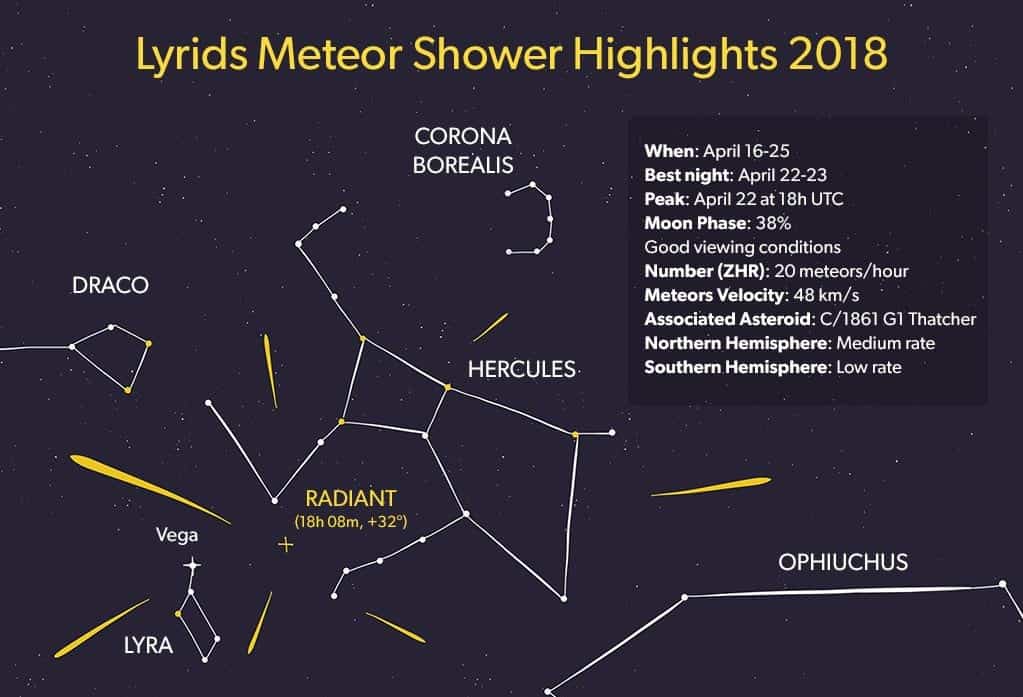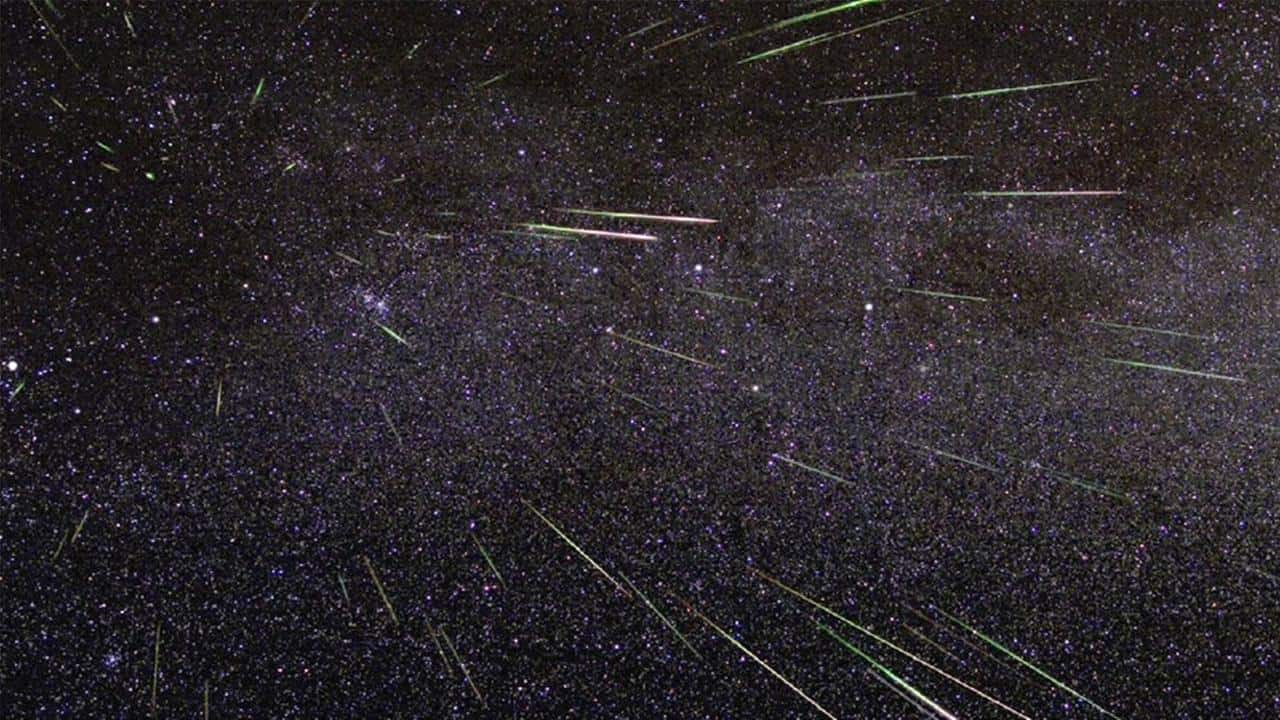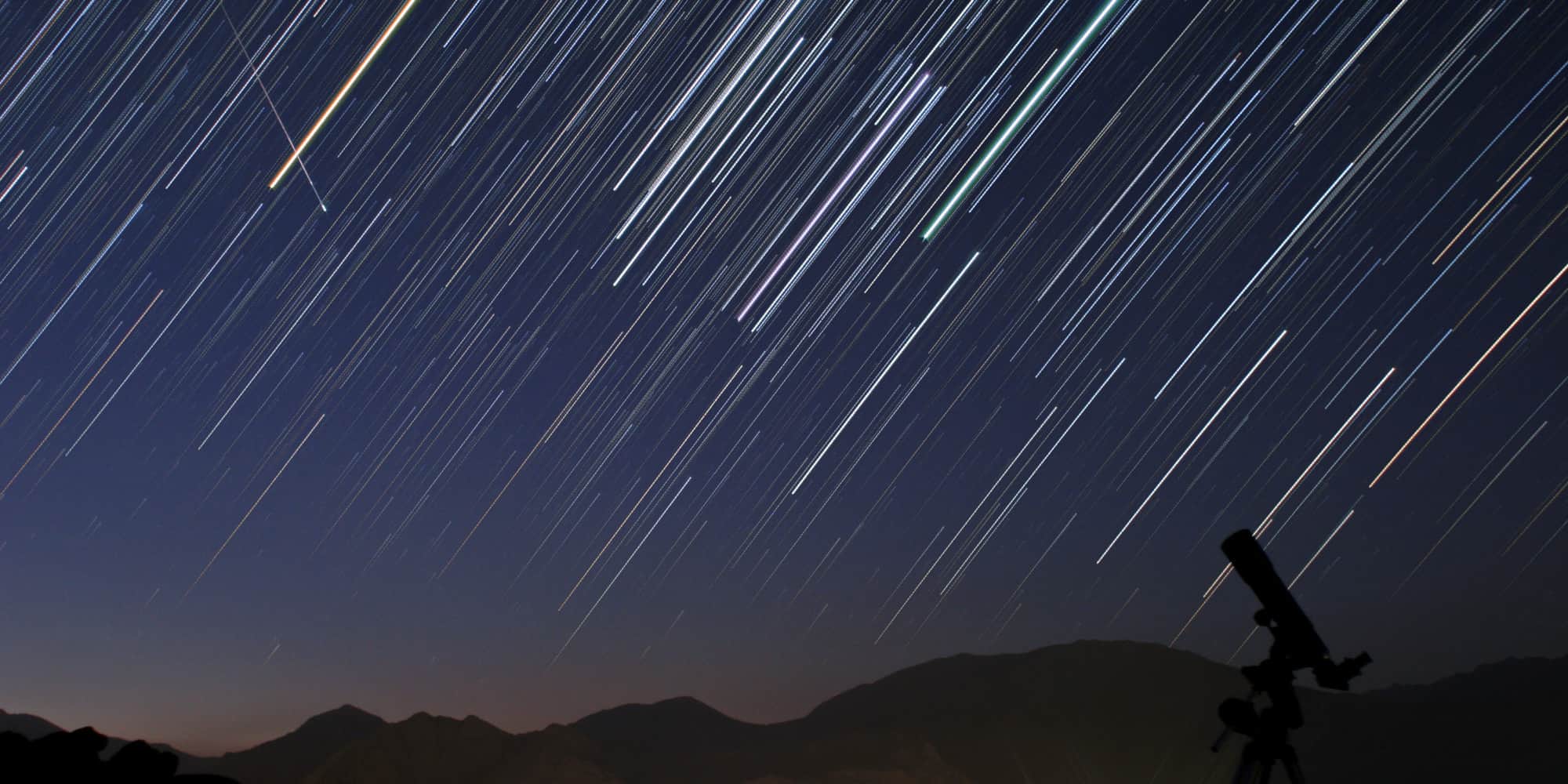The annual Lyrid meteor shower peaks this weekend! It’s active each year from about April 16 to 25. In 2018, the peak of this shower – which tends to come in a burst and usually lasts for less than a day – is expected to fall on the morning of April 22, with little or no interference from the waxing moon.
No matter where you are on Earth, expect the greatest number of meteors to fall during the few hours before dawn.
Peak shower hours will be after midnight on Saturday, April 21 until the early hours of Sunday, April 22
You will be able to see the meteors without the aid of a telescope.

This phenomenon occurs every year from April 16 to 25. Some areas will see a heavy meteor shower, falling debris from a comet as earth passes through its orbit. This phenomenon can be seen from all vantage points worldwide, but especially in dark areas far from urban lights and cities until the early hours of the dawn.
Depending on how clear the skies are, stargazers can see more than 20 meteors an hour. After the moon sets, the meteors are even more visible. This is the best time to visit Jebel Jais mountains in Ras Al Khaimah.
Meteorites arise when the earth’s path around the sun crosses with a comet’s path. The comet leaves a lot of dust and fine debris in its wake. Such particles enter the Earth’s atmosphere, then dissolve and evaporate as a result of the friction at altitudes between 80 and 120 kilometres high.
Because of this friction and melting effect, the meteor forms a bright line moving quickly through the sky for a few seconds or a fraction of a second. The diameter of such meteors doesn’t exceed beyond one centimeter and are as small as one millimeter. They enter the atmosphere at nearly 65 kilometers per second.
Millions of meteors enter earth’s atmosphere on a daily basis, most of which cannot be seen by the naked eye.











